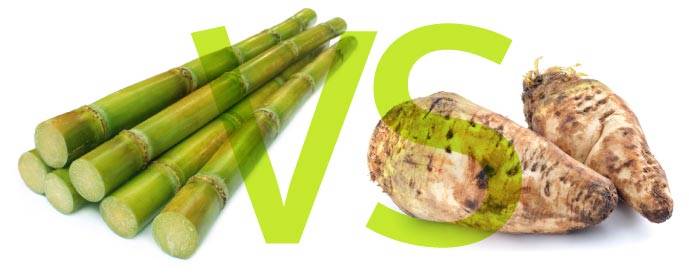Cane Sugar Processing Explained: What Happens Inside a Sugar Mill
Cane Sugar Processing Explained: What Happens Inside a Sugar Mill
Blog Article
A Comprehensive Summary of the Health and Economic Ramifications of Walking Cane Sugar Processing on Regional Neighborhoods
Walking cane sugar processing plays a critical duty in shaping the economic landscape of neighborhood neighborhoods, offering employment possibility and stimulating secondary markets. Nevertheless, the health and wellness ramifications connected with high sugar consumption can not be ignored, as they contribute to increasing rates of weight problems and diabetes mellitus. This nuanced dynamic welcomes a critical evaluation of how neighborhoods can enhance economic gains while resolving journalism health challenges they encounter. The expedition of sustainable techniques and academic efforts may just hold the trick to fixing up these contrasting passions. What strategies might areas execute to accomplish this balance?
Financial Advantages of Walking Cane Sugar Processing
Cane sugar processing offers significant economic benefits that prolong past the immediate agricultural field. The farming and handling of sugarcane develop various work chances, from farming to manufacturing and circulation. This employment generation not just supports neighborhood economic situations however also promotes community growth by offering secure earnings sources for family members.
Additionally, the sugar market promotes ancillary companies, consisting of transport, devices supply, and packaging services (Cane Sugar Processing). As these fields grow, they add to a much more durable economic framework, enhancing general area resilience. The export possibility of processed walking stick sugar further intensifies economic benefits, placing regions as competitive players in international markets
Investment in modern processing centers can cause enhanced productivity and performance, thereby minimizing waste and optimizing resource usage. This shift not just profits the local economic climate yet also supports sustainability efforts by lessening ecological influences.
Additionally, the profits generated from walking cane sugar handling can be reinvested in neighborhood facilities, education and learning, and health care, advertising holistic neighborhood development. Generally, the economic benefits of walking stick sugar processing are diverse, supplying a structure for sustaining success in farming areas.
Health And Wellness Threats Connected With Sugar Consumption
Excessive sugar usage presents substantial wellness threats that warrant severe focus. High intake of included sugars, specifically from refined drinks and foods, has been linked to many wellness problems. Among one of the most pressing worries is weight problems, as sweet diet regimens add to a raised caloric consumption without giving essential nutrients. This excess can bring about metabolic problems, including type 2 diabetic issues, which has actually come to be significantly widespread in both adults and children - Cane Sugar Processing.
Furthermore, high sugar intake is related to heart disease. Elevated blood glucose levels can bring about insulin resistance, a forerunner to numerous heart-related concerns. In addition, sugar can have detrimental impacts on dental health, causing tooth cavities and gum tissue disease, as germs in the mouth thrive on sugar, creating acids that wear down tooth enamel.
Furthermore, arising study recommends a prospective link in between high sugar consumption and mental health and wellness conditions, such as clinical depression and anxiety. As neighborhoods face these health threats, it becomes necessary to advertise understanding and urge healthier dietary options. Dealing with sugar usage is crucial not only for private wellness but also for the general health of neighborhood neighborhoods, stressing the need for comprehensive public health and wellness techniques.
Ecological Effects of Sugar Manufacturing
Regularly forgotten in conversations concerning sugar's ramifications is the substantial environmental effect of sugar manufacturing. The cultivation of sugarcane usually demands substantial land use, resulting in logging, loss of biodiversity, and interruption of local communities. The conversion of forests and wetlands right into sugar vineyards can lead to habitat destruction, threatening numerous species and changing eco-friendly equilibrium.
In addition, sugar manufacturing is resource-intensive, consuming significant quantities of water for watering. This can bring about depletion of neighborhood water sources, detrimentally affecting both farming methods and community accessibility to tidy water. In addition, making use of chemical plant foods and pesticides in sugarcane farming can add to dirt degradation and water contamination, as runoff from these chemicals goes into neighboring rivers and lakes, affecting water life and human wellness.
The ecological footprint includes the handling stage, where power usage and waste generation additional exacerbate ecological problems. Air pollution from melting sugarcane fields, in addition to greenhouse gas discharges, contribute to environment change. Thus, the environmental effects of sugar production warrant significant consideration, prompting stakeholders to embrace more lasting practices to alleviate these adverse results on local ecosystems and areas.
Job Production and Community Growth
The environmental difficulties posed by sugar manufacturing are commonly counterbalanced by its possibility for financial benefits, specifically in task production and neighborhood growth. The cane sugar sector functions as a considerable resource of employment in numerous country areas, supplying jobs throughout various skill degrees, from farming labor to processing and distribution functions. This employment not just sustains specific families but also adds to the general financial vigor of regional areas.
Additionally, the facility of sugar handling facilities promotes ancillary services, such as transportation solutions, tools supply, and upkeep suppliers. As these services prosper, they create additional work and strengthen regional economies. The income generated from the sugar sector likewise results in enhanced tax obligation earnings, which can be reinvested into social work such as infrastructure, health care, and check that education and learning advancement.
Moreover, the sugar industry often takes part in community growth initiatives, such as sustaining neighborhood institutions and health and wellness programs, thereby improving the lifestyle for residents. By fostering solid community connections and advertising economic development, the walking cane sugar processing industry plays a vital role in uplifting local populations, making it a crucial part of sustainable growth strategies in sugar-producing regions.
Balancing Health and Economic Growth
In browsing the intricacies of walking cane sugar handling, an important challenge hinges on balancing wellness considerations with economic growth. The sugar market considerably adds to neighborhood economic climates by generating jobs, boosting related industries, and increasing tax why not look here incomes. Nonetheless, the wellness effects related to excessive sugar consumption can lead to chronic illness such as obesity, diabetes mellitus, and cardiovascular issues, which can problem public wellness systems and lessen labor force performance.

In addition, governing structures can play a critical function in leading sector practices towards even more health-conscious and lasting methods. By promoting partnership in between federal government bodies, health organizations, and the sugar market, areas can browse the dichotomy of health and economic development, ensuring that the advantages of cane sugar handling are equitably shared while prioritizing public wellness.
Verdict
To conclude, the processing of walking stick sugar presents both considerable economic advantages go to this site and remarkable health threats for local areas. While it fosters task production and stimulates regional advancement, the associated wellness problems, specifically relating to weight problems and diabetic issues, require a cautious balancing act. By advertising liable usage and investing in neighborhood education and lasting methods, it is possible to make the most of economic advantages while lessening unfavorable health impacts, thus making sure a much healthier future for regional populaces.
Furthermore, sugar can have destructive effects on oral health, resulting in tooth cavities and gum tissue illness, as germs in the mouth thrive on sugar, generating acids that wear down tooth enamel.
Dealing with sugar consumption is crucial not just for individual wellness however additionally for the general well-being of regional communities, stressing the requirement for extensive public health methods.
Frequently forgotten in discussions concerning sugar's ramifications is the substantial environmental influence of sugar production. The wellness implications linked with extreme sugar consumption can lead to persistent diseases such as obesity, diabetes mellitus, and cardiovascular problems, which can problem public health systems and diminish workforce performance.

Report this page